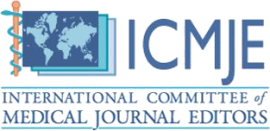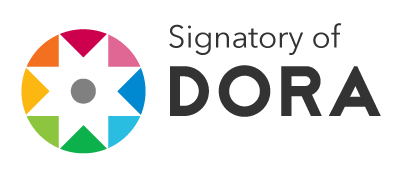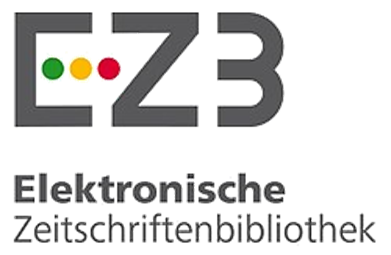Prospects and Challenges of Dynamic Bilingual Education in the Light of Pakistan’s Language Policy
DOI:
https://doi.org/10.51611/iars.irj.v10i2.2020.126Keywords:
Bilingual Education, Functional Biliteracy, Dynamic Bilingual Education, Bilingual EducationAbstract
This research investigates challenges and prospects of the dynamic, bilingual education in the light of Pakistan’s language policy. It guides language policymakers to adopt the dynamic, bilingual policy in Pakistan’s education system. However, the researcher revealed that most of the participants willingly favored and practiced the dynamic model of bilingual instruction, but there is no formal policy guide for them. The employment of this education model is valid and feasible in both theory and practice. Besides, readers and policymakers through this research paper would come to know that the dynamic, bilingual education improves students’ socio-cognitive, linguistic performance and functional biliteracy through translanguaging and multimodalities. The issue of monoglossic separation of languages in Pakistan is yet to be solved. Furthermore, the researcher used qualitative, empirical methodology to do analysis and employed open-ended questionnaires to collect data. The researcher used purposive sampling to collect data from sixteen respondents. Additionally, findings show that the subtractive language policy, linguistic politics, the power elite’s monolingualism, parents’ obsession with English, and students’ negative attitudes are challenges to the dynamic, bilingual education. In contrast, Pakistan’s multi-lingual reality along with translingual practices, the use of multimodalities, students’ multi-lingual repertoire, functional biliteracy, and transcultural interaction are some of the prospects of the dynamic, bilingual education policy in Pakistan. Thus, there are both challenges and prospects of the dynamic, bilingual education policy in Pakistan.
Downloads
References
Channa, Khalid H., and Shumaila Memon. "MEDIUM OF INSTRUCTION AND BILINGUAL EDUCATION: A STUDY OF CHALLENGES AND OPPORTUNITIES." Academia.edu - Share Research, Grassroots, 2016, www.academia.edu/29159711/MEDIUM_OF_INSTRUCTION_AND_BILINGUAL_EDUCATION_A_STUDY_OF_CHALLENGES_AND_OPPORTUNITIES.
Federal Ministry of Education and Professional Training. "National Education Policy 2009." Idara-e-Taleem-o-Aagahi | Education | Education in Pakistan | Equity | Inclusion, Government of Pakistan, 2009, itacec.org/document/2015/7/National_Education_Policy_2009.pdf.
García, Ofelia. Bilingual Education in the 21st Century: A Global Perspective. John Wiley & Sons, 2011
Gulzar, Malik A. "classroom discourse in bilingual context: effects of code switching on language learning in Pakistan tefl classroom." Welcome to Pakistan Research Repository, Higher Education Commission, 2010, prr.hec.gov.pk/jspui/bitstream/123456789/1865/1/1385S.pdf.
Habib, Masooma. "Education in Pakistan’s Punjab: Outcomes and Interventions." THE LAHORE JOURNAL OF ECONOMICS, vol. 18, no. Special Edition, 2013, pp. 21-48.
Hassan, R. "A Comparative Study of the Pakistani Bilingual and Monoglot School Children's Performance in Verbal and Non-verbal Test." Pakistan Journal of Psychology, vol. 3, 1981.
Jabeen, S. "Google Scholar." Google Scholar, 2010, scholar.google.com/scholar_lookup?title=Research%20in%20bilingualism%3A%20A%20dilemma%21&author=S.%20Jabeen&journal=Explorations&volume=21&pages=67-79&publication_year=2010.
Jain, Rashi, and Ahmar Mahboob. "Bilingual Education in Pakistan and India." Academia.edu - Share Research, 2014, www.academia.edu/19613397/Bilingual_Education_in_Pakistan_and_Indiahttps://www.academia.edu/19613397/Bilingual_Education_in_Pakistan_and_India.
Lewis, M. P. Ethnologue: Languages of the World. 19th ed., International Academic Bookstore, 2016.
Mahon, Merle, Alison Crutchley and Tina Quinn. "Editorial: New directions in the assessment of bilingual children." https://faculty.biu.ac.il/~armonls/924/NWR/assessment%20of%20bilingual%20children.pdf Arnold, 2003, faculty.biu.ac.il/~armonls/924/NWR/assessment%20of%20bilingual%20children.pdf.
Manan, Syed A., Maya Khemlani David and Francisco Dumanig. "English Language Teaching in Pakistan: Language Policies, Delusions and Solutions." Language Policy, 2016, pp. 219-244.
Ministry of Federal Education and Professional Training. "Ministry of Federal Education and Professional Training." Ministry of Federal Education and Professional Training, Government of Pakistan, 2020, mofept.gov.pk/Detail/NWJmMmM2YTQtM2YzYi00NjJkLTgzNDEtYzMxMTI4MTllY2Qw.
García, Ofelia. Bilingual Education in the 21st Century: A Global Perspective. John Wiley & Sons, 2009, pp. 180-181 (mobile version).
Qadir, M. A. "Issues of language(s) choice and use: a Pakistani perspective." CiteSeerX, Pakistan Journal of Social Sciences, 2010, citeseerx.ist.psu.edu/viewdoc/download?doi=10.1.1.700.7427&rep=rep1&type=pdf.
Quad, A. "Research Methodology in Education: Ethnography – Research Methodology in Education." Research Methodology in Education – An LLED Manual, 2016, lled500.trubox.ca/2016/207.
Rahman, Tariq. "Denizens of alien worlds: A survey of students and teachers at Pakistan's Urdu and English language-medium schools, andmadrassas." Contemporary South Asia, vol. 13, no. 3, 2004, pp. 307-326.
"Raja, F. U. (2014). Bilingual Education System at Primary Levels of Pakistan. Journal of Research (humanities), 77-99
Sunaina, A. "Bilingual Curricula for Equity Literacy in Punjab, Pakistan." Cardinal Scholar Home, Ball State University, 2019, cardinalscholar.bsu.edu/handle/123456789/201629. Accessed 14 Sept. 2020.
Tariq, A. R., and H. A. Bilal. "Functions of code-switching in Bilingual classrooms." Research on Humanities and Social Sciences, vol. 3, no. 14, 2013, pp. 29-34.
UNESCO. "2016." UNESCO | Building Peace in the Minds of Men and Women, 2016, en.unesco.org/gem-report/taxonomy/term/198.
Downloads
Published
Issue
Section
License
Copyright (c) 2020 Ameer Ali

This work is licensed under a Creative Commons Attribution 4.0 International License.
Author(s) hold complete right on the content of this article. Copyright to the content are governed as per Copyright Policy of the Journal.





















